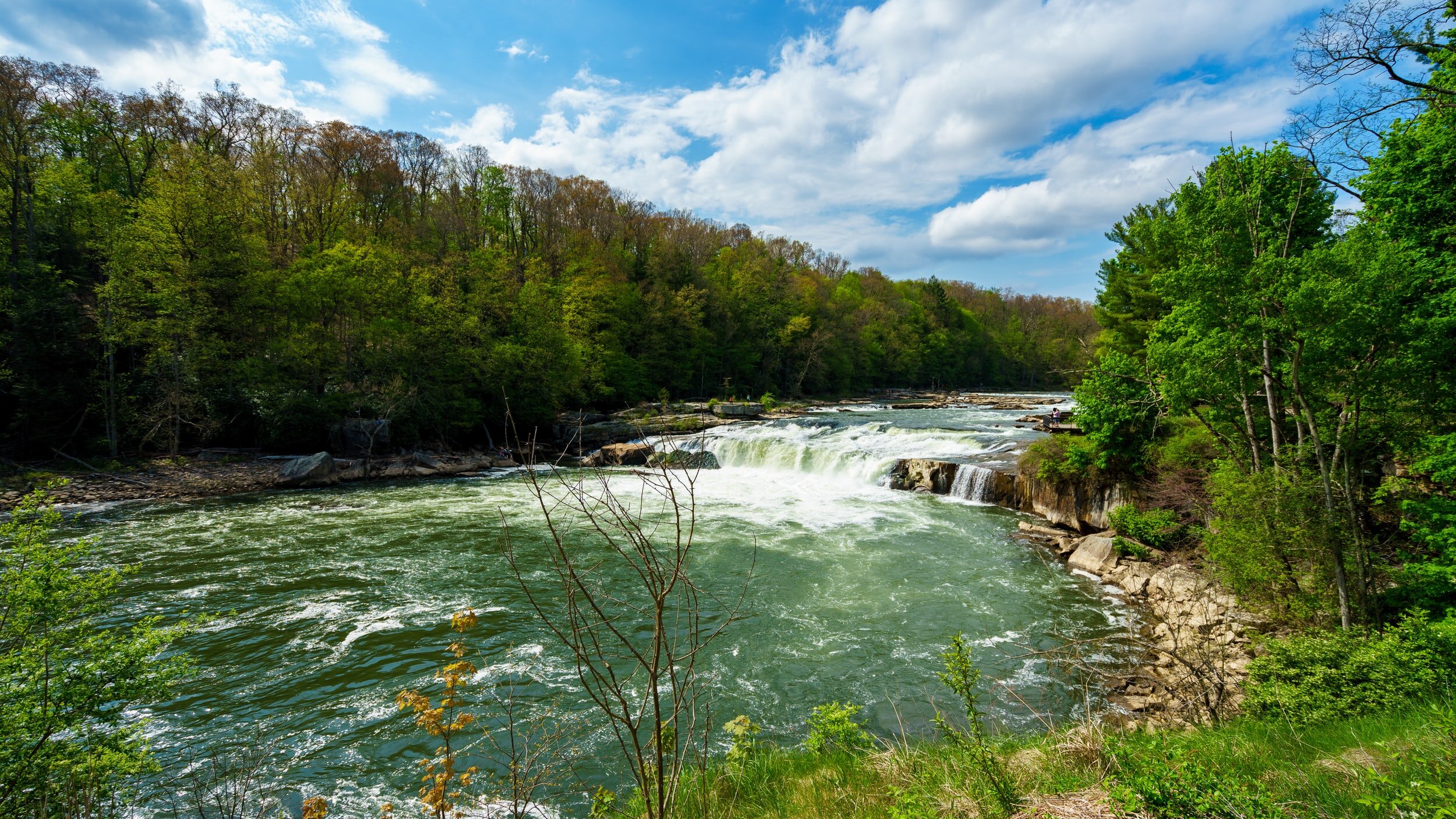
About Ohiopyle

We have mother nature to thank for the gem that is Ohiopyle. Due largely in part to the strong and graceful Youghiogheny River, or "Yough" (pronounced "Yok") for short.
Youghiogheny is a word from the Lenape language that means "a river which flows in a contrary direction.” Rather than flowing south, it flows north toward Pittsburgh as a tributary of the Monongahela river.
Ohiopyle, PA is a small community in the Laurel Highland mountains of Fayette County. The name Ohiopyle was derived from a Native American Indian word "ohiopehhla," meaning white frothy water.
The History of Ohiopyle
The earliest signs of humanity along the Youghiogheny River date back almost 10,000 years. However, the most recently documented historical inhabitants were the Monongahela Native American peoples, dating back to roughly 1,000 years ago. The year-round flow and cool temperatures of the river means these natives probably used the river for many purposes, including fishing, travel, and as a great way to cool down in the summer heat, much as we do today.
Mysteriously, these people vanished from the area shortly before the arrival of European settlers in the 1600's. Following this, several other native tribes used the Ohiopyle area as a hunting ground but never made it their permanent home. The Shawnee, Seneca, and Delaware tribes all passed through the area, and the name "Ohiopyle'' comes from a Lenape Delaware word meaning "white frothy water".
In 1754, while scouting western Pennsylvania for a water route to aid in retaking the fort at the forks of the Ohio river (presently the city of Pittsburgh), a young George Washington floated the Yough River from modern day Confluence toward Ohiopyle. As he neared the falls, the river gained speed forcing his men onto the land. His journal recorded the incident, stating "The river became so rapid as to oblige us to come ashore". He was referencing what we now know as the 19-foot tall Ohiopyle Falls.
Beginning in the early 1800's, the region started to grow around the forestry industry. In 1803, Lewis and Clark commissioned a keelboat that was built on the banks of the Yough near McKeesport for their famed journey across the U.S.
By 1811, the population in Ohiopyle began to swell as the National Road was completed in 1817, opening the region to trade with eastern markets. Lumber was the dominant industry and a mill was constructed on the rock outcropping adjacent to the falls, not far from the present day visitor's center and parking lot.
The river was used as trees were felled and floated downstream to the mill, where the water powered a large wheel to run the mill. In 1871 the first rail line through the Yough Valley was completed, and passenger stations were built in Ohiopyle. These railroads began bringing Tourists from Pittsburgh and surrounding areas, and by the early 1900's Ohiopyle was home to several grand hotels, with the area eventually becoming known as "Falls City".
Whitewater As We Know It Today
In 1959 a small group of young men were the first to complete a descent of the Upper Yough (Class IV/V) river in Maryland. Bill Bickham, Dave Kurtz, and Tom Smyth unknowingly started a revolution in what would become the hot spot for whitewater rafting. Using wooden boats and basically no protective equipment, such as helmets or flotation devices, these intrepid adventurers built the foundation for what would become a thriving community of outfitters, guides, and annual travelers.


